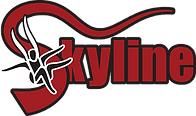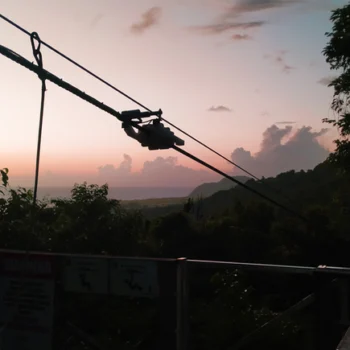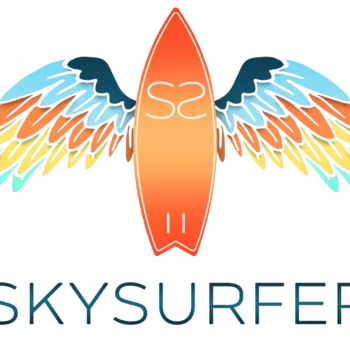How to Budget for a Commercial Zipline Project
Building a Budget for an Eco-Friendly Zipline Adventure Park
Designing a commercial zipline park has many factors to consider with regards to budgeting.
We always start by asking: How many zip lines and platforms are envisioned? What’s the target visitor capacity? How much clearance and elevation change is available? The terrain and climate profoundly affect cost – for example, rugged mountain sites or dense rainforest require extra clearing, specialized anchors, and careful erosion control, whereas flat areas may need more artificial towers. Access and soil stability matter too: a remote jungle or desert location means higher logistics and prep costs.

In practice, a detailed site survey and design is one of the first budget items (typically on the order of single-digit percentages of the total), as it lets engineers anticipate challenges (poor soils, steep slopes, deep snow) and tailor the design. In short, larger and more remote projects demand proportionally more engineering time, labor, and materials.
Engineering and Design (~5–10%)
Comprehensive engineering and design work – often around 5–10% of the budget – lays the groundwork for a safe, exciting, and environmentally sensitive course. This includes topographic surveys, structural and safety engineering, rope and cable tension calculations, and site-specific drawings. Investing early in good design pays off by avoiding costly change orders later. This upfront design work also sets the stage for estimating the other categories of the budget.
Permitting, Legal and Environmental Compliance (~5–10%)
Before construction, plan on allocating roughly 5–10% of the total budget for permits, legal fees, and environmental compliance. Adventure parks face a complex web of regulations: land-use zoning, building permits, height/structure approvals, and sometimes aviation or tourist operation licenses. In many regions, a full environmental impact assessment is required, which involves surveys for wildlife, vegetation studies, and mitigation plans. These can include fees for consultants and reports. Navigating permits can be costly and time-consuming. Insurance premiums (liability, workers’ comp, and property) also must be budgeted here.

Local regulations vary widely: mountainous national parks may require extra safeguards or limits on tree removal, coastal areas may have erosion-control rules, and desert sites may need water permits for dust suppression. Often, engaging an environmental engineer or local planner early prevents delays. Don’t forget legal costs – include lawyer or consultant fees for lease reviews, contracts, and compliance. (A typical rough guide is to treat permitting and legal at least as a mid-single-digit percentage of total costs, but this can spike in sensitive areas.)
Materials and Construction (~40–50%)
As one would expect, materials and construction eat up the largest share – often 40–50% or more of the budget. This covers towers, platforms, foundations, cables, steel hardware, and all site work. High-quality materials are non-negotiable: for example, we only use the highest quality galvanized steel cables. The choice of materials can shift costs: we use steel for our towers as it is stronger and lasts longer, costing less in the long run.
Labor is another major factor. Remote or difficult terrain can multiply construction man-hours (for example, clearing a dense forest or stabilizing a hillside). We often need lifts and occasionally cranes or even helicopters to assemble tall towers in steep, remote, or tree-covered areas. In some projects, manufacturing structures (pre-fabs) off-site and assembling them on-location proves more cost effective. All such logistics – building access roads, delivering heavy timber or steel, pouring concrete footings – must be accounted for. Materials and on-site construction will likely consume the plurality of the budget, reflecting both raw material costs and the skilled crews required.
Safety Systems and Equipment (~10%)
Safety gear and systems – roughly 10% of costs – are critical. This includes harnesses, helmets, trolleys, and braking systems.
Skyline offers top of the line gear that is built specifically for high-throughput, high-speed commercial ziplines with low repair costs and significantly longer lifespans than competitors. All of our equipment meets or exceeds international standards.
Buying other gear–like consumer grade trolleys for instance–may be a cheaper upfront cost but due to their short lifespan replacement costs will add up quickly.
In addition to hardware, initial training of staff on all safety systems must be planned.
Expect to replace harnesses typically every 5 years and cables every 10. Depending on environmental conditions this can change dramatically which is why monthly and annual inspections are critical. Even with careful use, heavy daily operation shortens the lifespan of gear, so include future replacement costs in financial projections.
Staffing and Training (~10–15%)
A top-tier zipline park requires a well-staffed team, so allocate about 10–15% of your budget for hiring and training. Staff costs include guides and administrative personnel (ticketing, marketing, maintenance crew). In many markets, labor rates may be one of the larger operational expenses. Training is equally important – on average approximately 20 hours of initial training per guide can be expected; plus regular refreshers.
Skyline provides comprehensive documentation in our training manuals including visual aids, certificates, maintenance logs, inspection reports and emergency action plans. We are here to support you, answering any questions you may have related to equipment, operational efficiency, maintenance, inspections, etc.
Also factor in uniforms, radios, first-aid kits, and any specialized tools for daily operations. Commonly overlooked items include staff vehicles or ATVs for driving on trails and reaching remote launch/landing zones, as well as maintenance tools (chainsaws for trail clearing, cable pullers, etc.).
Even cleaning supplies for any visitor centers or restrooms should be budgeted.
Insurance and Risk Management (~5–10%)
Don’t forget insurance and liability, which together can be another 5–10% of your total budget (or more in high-risk regions). Comprehensive policies should cover general liability, participants’ accident insurance (often required by law), workers’ compensation, and property losses. We routinely recommend clients ensure every subcontractor and guide carries certified insurance as well.
In parallel, legal and administrative risk-mitigation costs should be included. This may cover drafting waivers, safety manuals, and emergency response plans. Allow for fees from attorneys or compliance specialists. As a rule, factor insurance premiums into the upfront budget, and plan for reserves to cover deductibles or unexpected claims. In practice it’s wise to earmark at least a few percent of the budget for risk management contingencies.
Marketing, Branding and Launch (~5–10%)
A neglected budget pitfall is marketing and business development. This covers branding (logo design, signage, and thematic elements), a launch campaign (media, launch events, influencer visits), and ongoing advertising (websites, social media, print, tourism partnerships). Even in local markets, visibility is key – advertising at hotel lobbies, social media ads, or partnering with tour operators can significantly boost launch attendance.
Also consider signage and visitor center aesthetics – these fall under marketing even though they are construction items. In sum, a professional-looking launch and ongoing marketing campaign ensures revenue streams justify the investment.
Maintenance and Long-Term Operations (~5–10%)
Finally, factor in ongoing maintenance. After opening, recurring costs include annual safety inspections, training and staff re-hiring, cable re-tensioning, hardware replacement, and structural upkeep.
Budget also for inspection logs and potential upgrades to meet evolving safety standards. Vehicle operation (fuel and maintenance for utility ATVs and trucks) should be in OPEX projections. Remember amenities too: guest facilities like restrooms, picnic areas, and parking lots need upkeep. In planning terms, assume that the park will require 5–10% of its original capital each year for maintenance and refurbishment, varying by climate (humid or snowy areas may incur higher wear) and usage volume.
Common Pitfalls and Overlooked Costs
Even the best plans can miss some items. Common budget pitfalls include:
- Site Access and Infrastructure: Underestimating the cost of building or paving access roads, trails, bridges, or parking areas. Remote build sites often require new roads or vehicular bridges, which can become large line items.
- Contingency Fund: Failing to include a contingency reserve for unexpected overruns. Delays due to weather or permitting are common, so a buffer is essential.
- Equipment Vehicles & Tools: As noted, items like ATVs, cable-pulling machines, and maintenance equipment are often forgotten. Budget for them early.
- Facility Utilities: Costs for water, sewage, or electricity hook-ups (for zipline operations or visitor centers) can surprise new operators.
- Seasonality: If the climate forces winter closure (snowy winters or monsoons), include revenue shortfall in a multi-year cash flow. Downtime means no ticket income but ongoing insurance and some staffing costs.
- Training Refreshers: We see parks initially train guides and then neglect future training costs. Include annual recertification and first-aid refresher courses in staffing budgets.
- Environmental Mitigation: Even after construction, some parks pay for reforestation, wildlife monitoring, or erosion control mandated by their environmental assessments. Include these long-term obligations.
- Marketing Refresh: Plans should budget for periodic promotional pushes (new attractions, seasonal events) beyond the launch phase.
By listing out these often-overlooked costs and building contingency into each category, you avoid running short on cash during development or operations.
Conclusion
Creating a sustainable zipline park is capital-intensive, but with careful planning your investment can pay dividends in the booming eco-tourism market. To recap: expect engineering and design to take roughly 5–10% of your budget, permits and environmental compliance another 5–10%, materials and construction the lion’s share (~40–50%), and the rest spread among safety systems, staffing, insurance, marketing, and maintenance (each generally in the single-digit percentages of the whole). Throughout, prioritize minimal environmental impact – we often leave natural landscapes “untouched” by placing towers or routing lines intelligently. Use locally sourced materials where feasible and design with sustainability in mind.
With budgets on the order of millions, even conservative percentage spreads mean big-dollar allocations, so plan each line item and percentage carefully. When done right – blending thrilling adventure with eco-conscious design – a zipline park can become a landmark attraction that delights guests while respecting the very nature that draws them.
- Posted by Luka Wrenshall
- On June 2, 2025


